Are you concerned about safety in your workplace? Reporting hazards is essential to ensure a secure environment for everyone. In this article, we'll guide you through the process of submitting a workplace hazard report, making it easy and straightforward. So, let's dive in and explore how you can contribute to a safer workplace for all by sharing your observations!
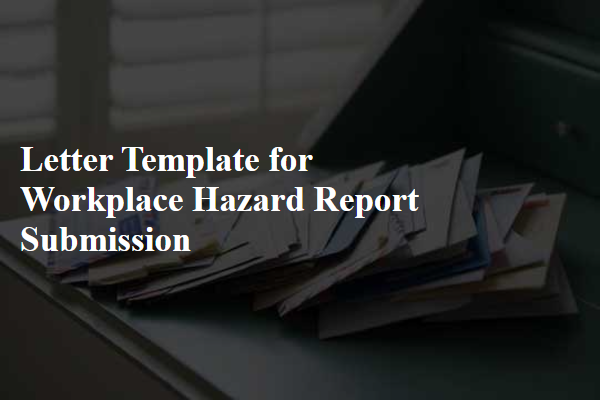
Clear and concise description of the hazard
Inadequate lighting in the warehouse poses a significant safety risk for employees. During evening shifts, poorly illuminated areas can result in increased likelihood of trips and falls, particularly near forklift pathways and storage racks. Insufficient visibility affects workers' ability to notice hazards, such as spilled liquids or misplaced equipment. Consistent reports indicate that more than 30% of accidents in dimly lit sections have been attributed to this issue, raising concerns about employee safety and productivity. Immediate assessment of light levels, especially in areas using fewer than the recommended 100 lux, is essential to mitigate risks.
Potential impact on safety and operations
Potential workplace hazards can significantly impact safety and operational efficiency. For instance, improperly stacked materials in warehouses can lead to accidents, resulting in injuries with an estimated 100,000 cases annually, according to the Bureau of Labor Statistics. Employee presence in blind spots, such as those near heavy machinery like forklifts, increases risks of collisions. Furthermore, inadequate lighting in areas with high foot traffic, particularly stairways, can raise the likelihood of slips and falls. Prolonged exposure to chemical substances, especially in manufacturing settings, can affect health, leading to chronic conditions over time. Regular assessments of work environments are crucial to identify these hazards and implement corrective actions.
Location and time of hazard occurrence
On-site safety assessments have revealed significant workplace hazards at the manufacturing facility located in Springfield, which were identified between 10:00 AM and 11:30 AM on March 15, 2023. This timeframe illuminated critical risks, including an unguarded conveyor belt system and inadequate lighting in the storage area. These hazards pose severe threats to employee safety, particularly in high-traffic zones where operational activities peak. Immediate action is necessary to ensure compliance with Occupational Safety and Health Administration (OSHA) regulations and to protect the well-being of all staff members on site.
Recommended corrective actions
Identifying workplace hazards is essential for maintaining a safe environment. Common hazards include spills, sharp objects, and electrical equipment. Recommended corrective actions vary based on the severity of the hazard. For spills, immediate cleanup using proper absorbents is crucial to prevent slips and falls. Sharp objects should be stored securely and labeled appropriately. Regular inspections of electrical equipment can prevent malfunctions, with faulty devices being replaced or repaired promptly. Training staff on recognizing hazards ensures a proactive safety culture, minimizing risks and enhancing overall workplace safety. Emergency contact numbers should be clearly displayed for immediate action in case of serious incidents.
Contact information for follow-up
Creating a workplace hazard report is crucial for ensuring safety and compliance with occupational health standards. The report should include specific details about the hazard, such as the date of the observation, location within the facility (e.g., Factory Floor-Section B), the nature of the hazard (e.g., exposed wiring, chemical spills), and potential risks associated with the hazard (e.g., electrical shock, slip and fall injuries). Providing a clear description of the circumstances surrounding the hazard will aid in understanding its severity and urgency. Including personal contact information for follow-up, such as the name (e.g., John Doe), phone number (e.g., (555) 123-4567), and email address (e.g., johndoe@email.com), ensures that the relevant safety personnel can address the issue promptly and gather further details if necessary.

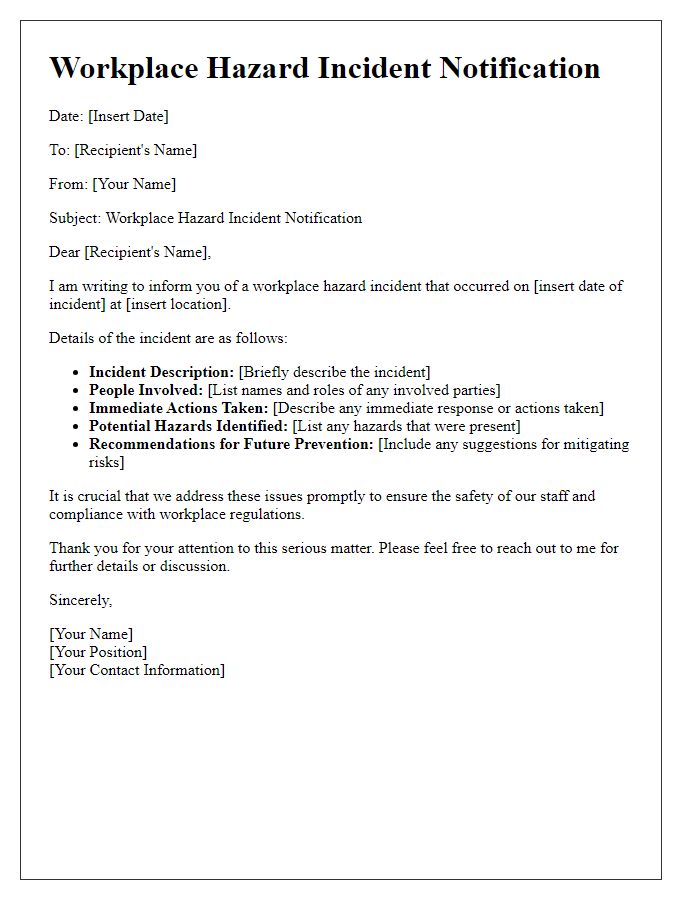
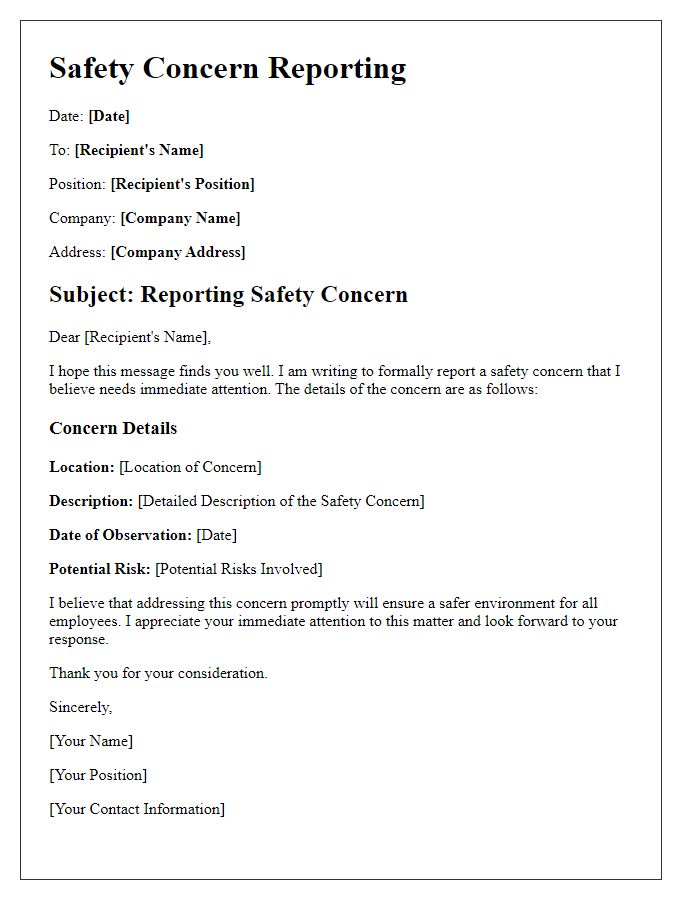

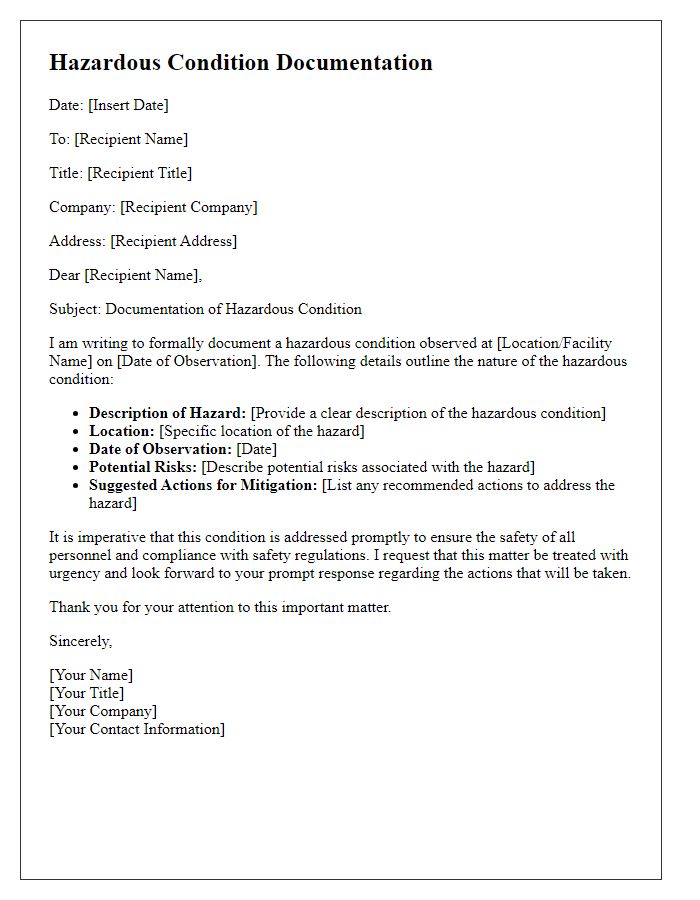
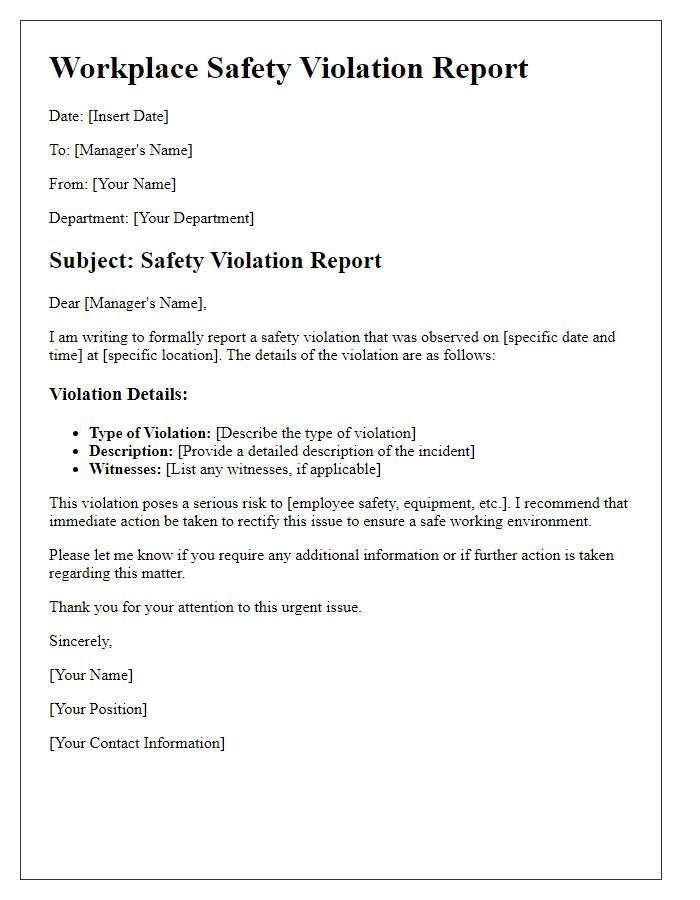
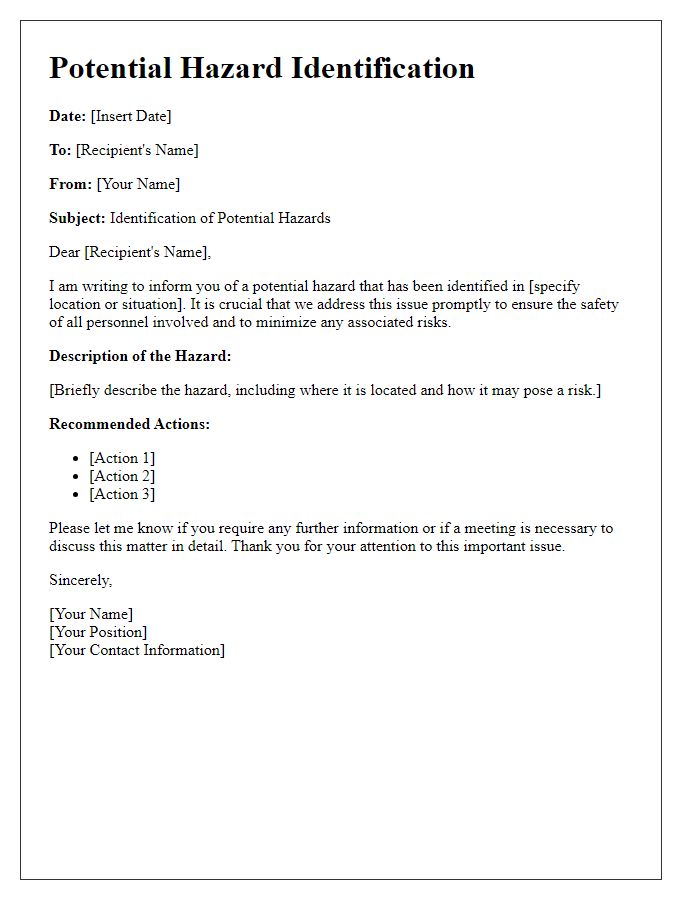
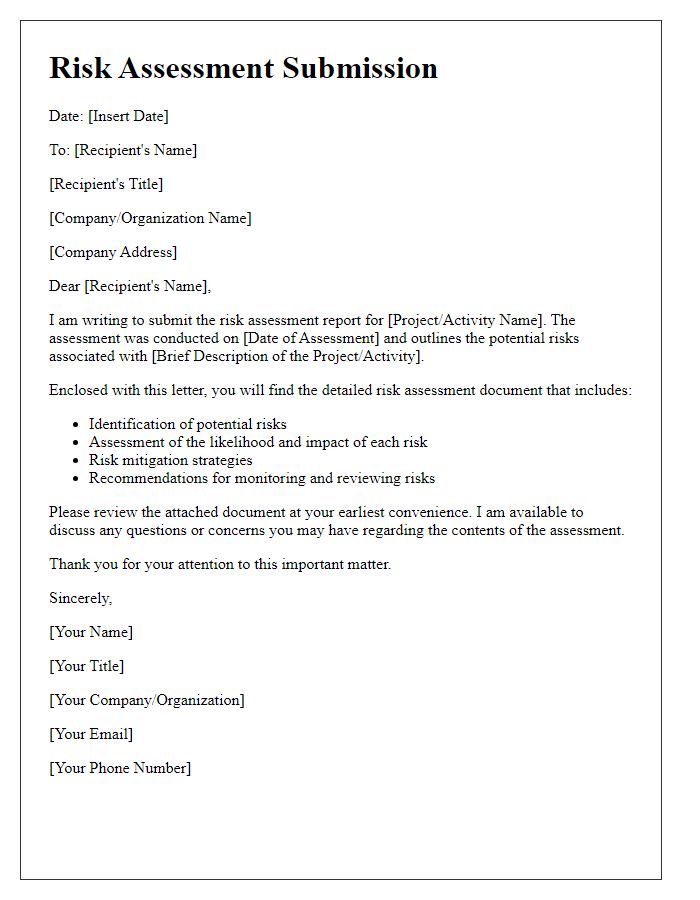
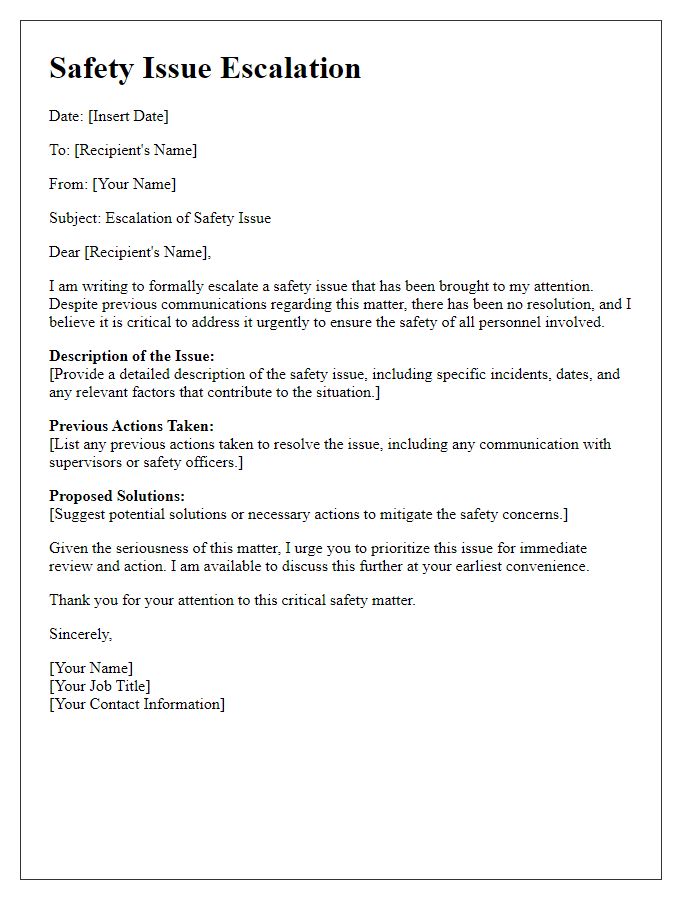
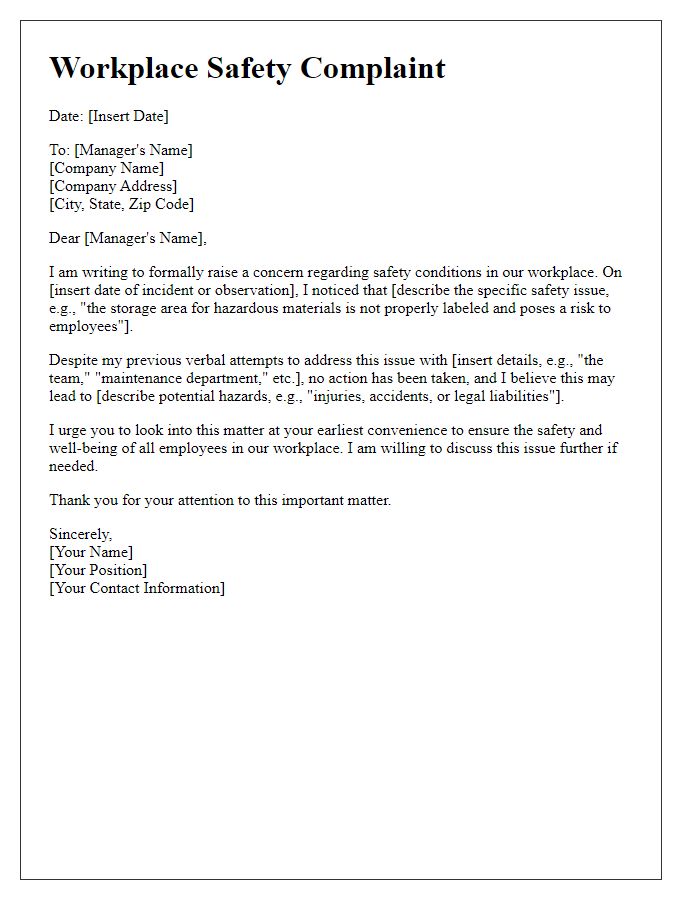
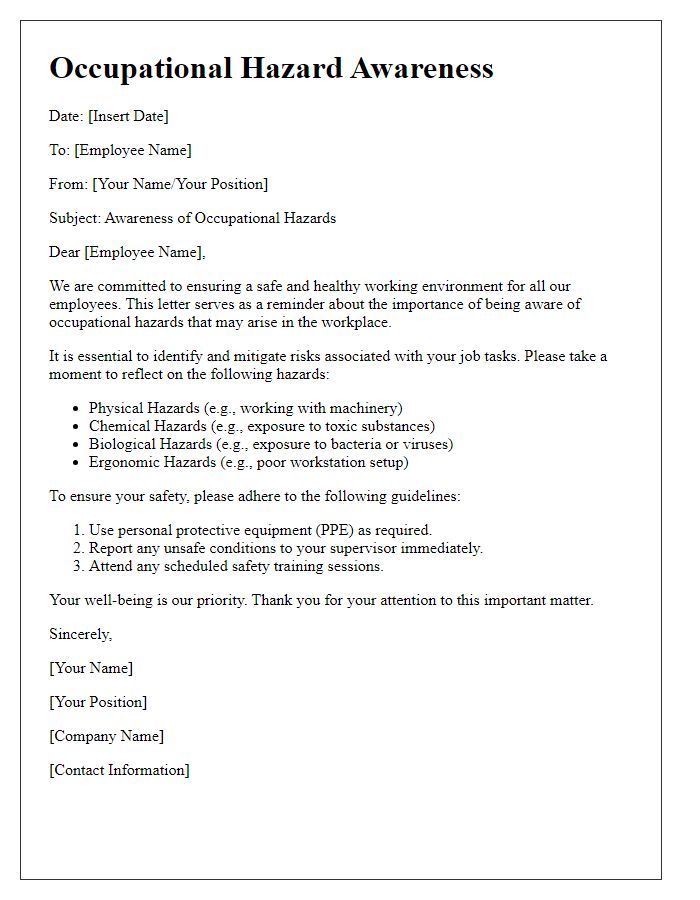


Comments